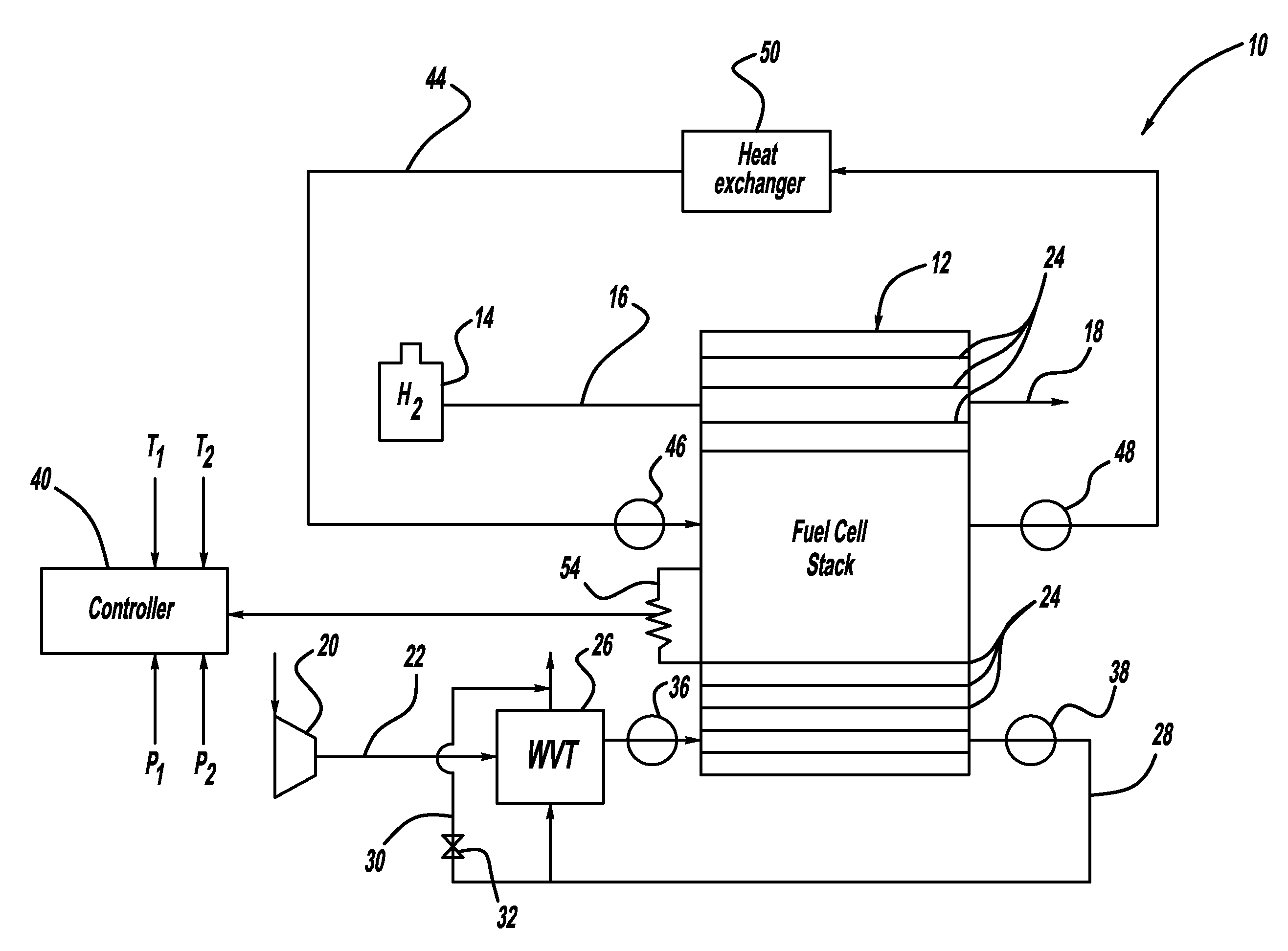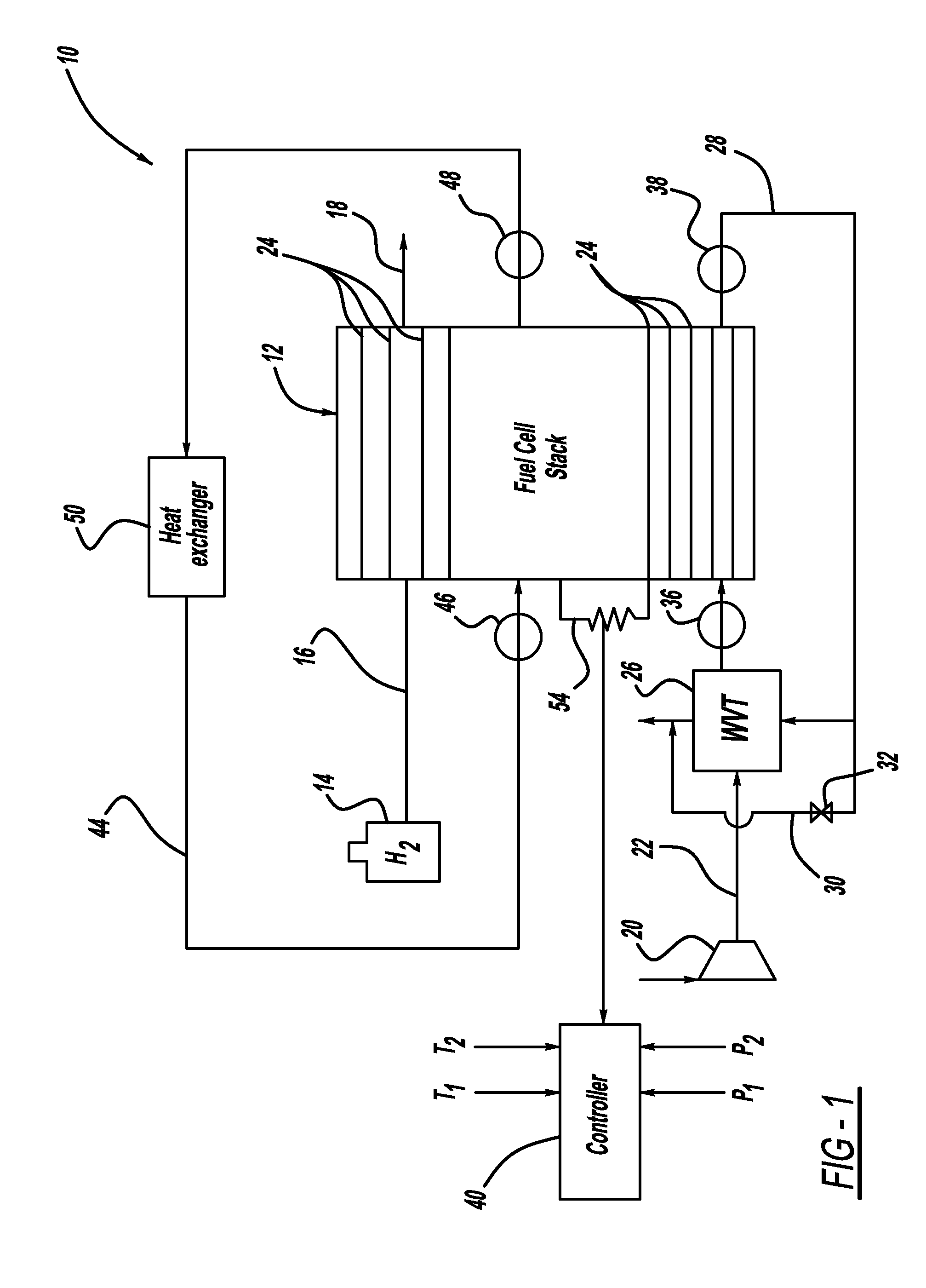Online estimation of cathode inlet and outlet rh from stack average hfr
a technology of cathode inlet and outlet rh and stack average, which is applied in the direction of electrochemical generators, instruments, and mechanical means, can solve the problems of increasing the size of the hole in the membrane, limiting the life of the membrane, and relatively expensive manufacturing of the membrane, so as to minimize the error and high frequency resistance
- Summary
- Abstract
- Description
- Claims
- Application Information
AI Technical Summary
Benefits of technology
Problems solved by technology
Method used
Image
Examples
Embodiment Construction
[0020]The following discussion of the embodiments of the invention directed to a method for estimating a cathode inlet and cathode outlet relative humidity by measuring the high frequency resistance of a fuel cell stack is merely exemplary in nature, and is in no way intended to limit the invention or its applications or uses.
[0021]FIG. 1 is a schematic block diagram of a fuel cell system 10 including a fuel cell stack 12. The fuel cell stack 12 includes a plurality of fuel cells 24 where each fuel cell 24 includes a membrane electrode assembly (MEA) separated from each other by electrically conductive, liquid-cooled bipolar separator plates (not shown). The fuel cell stack 12 receives hydrogen from a hydrogen source 14 on anode input line 16 and provides an anode exhaust gas on line 18. A compressor 20 provides an air flow to the cathode side of the fuel cell stack 12 on cathode input line 22 through a water vapor transfer (WVT) unit 26 that humidifies the cathode input air. A cath...
PUM
| Property | Measurement | Unit |
|---|---|---|
| cell voltage potential | aaaaa | aaaaa |
| relative humidity | aaaaa | aaaaa |
| RH | aaaaa | aaaaa |
Abstract
Description
Claims
Application Information
 Login to View More
Login to View More - R&D
- Intellectual Property
- Life Sciences
- Materials
- Tech Scout
- Unparalleled Data Quality
- Higher Quality Content
- 60% Fewer Hallucinations
Browse by: Latest US Patents, China's latest patents, Technical Efficacy Thesaurus, Application Domain, Technology Topic, Popular Technical Reports.
© 2025 PatSnap. All rights reserved.Legal|Privacy policy|Modern Slavery Act Transparency Statement|Sitemap|About US| Contact US: help@patsnap.com



